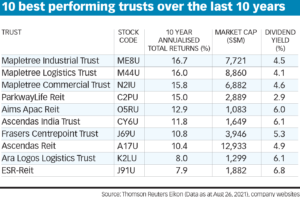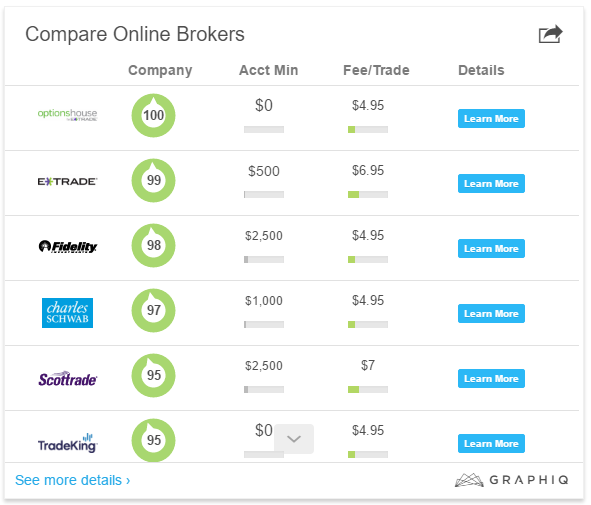
Either you are new to investing or an experienced investor who is looking for the next step in your career, an index fund could be a good choice for your portfolio. Index funds can provide exposure to a broad range of investments such as stocks, bonds, cash and technology.
Index funds provide diversification in your portfolio to reduce the risk of big losses. Because they produce higher annual returns, index funds are a great investment option. They may not be the right choice for everyone. Therefore, it is important to do your research.
The majority of index funds can be purchased through a broker account or mutual fund company. Index funds can be purchased at all major brokers for almost any index. You can also purchase index funds from your employer's 401(k), Roth IRA plan.

The first step in buying an index fund is to decide where you want to invest your money. There are hundreds to choose from. They reflect different companies and sectors. You have two options: you can choose a broad market indicator like the S&P 500; or, you can select an index that is specific to a company type, such as small and large caps.
The expense ratio is an important factor to consider when choosing between two index funds. An expense ratio shows how much it costs for a fund to invest. A low expense ratio index fund is one that costs less than 0.2%. This will help you save approximately $16 each year on every $10,000 that you invest.
The share price is another important consideration when selecting an index fund. A lower share price may allow you to buy less shares than a higher price. This will help you avoid buying or selling shares at a higher price. The risk level of the fund should be considered. Index funds that have corporate bonds typically carry a greater risk. They can also offer higher returns.
Before making an investment, you should read the fund's shareholder report to learn about the fund's holdings. It's also important to read the fund's prospectus. You should find detailed information on the fund's holdings, sector, and geographic regions on its website. This will help you to decide if the fund is right for you.

Last but not least, consider the fees and trading costs associated with an index fund. Over time, fees can add up. A low cost index fund will have lower trading costs and a lower expense ratio. The fund that costs more than the index it tracks could underperform the index. Some funds charge special fees to buy or sell shares.
An index fund can be purchased online in a matter of minutes. An index fund can be purchased online from a brokerage or mutual fund company. Make sure you do your research to find the right index fund for you.
FAQ
What is security at the stock market and what does it mean?
Security is an asset that generates income. Most common security type is shares in companies.
There are many types of securities that a company can issue, such as common stocks, preferred stocks and bonds.
The earnings per share (EPS), as well as the dividends that the company pays, determine the share's value.
A share is a piece of the business that you own and you have a claim to future profits. You will receive money from the business if it pays dividends.
You can sell your shares at any time.
Who can trade on the stock exchange?
The answer is everyone. Not all people are created equal. Some have greater skills and knowledge than others. They should be recognized for their efforts.
Other factors also play a role in whether or not someone is successful at trading stocks. If you don't understand financial reports, you won’t be able take any decisions.
You need to know how to read these reports. You must understand what each number represents. And you must be able to interpret the numbers correctly.
Doing this will help you spot patterns and trends in the data. This will help to determine when you should buy or sell shares.
If you're lucky enough you might be able make a living doing this.
What is the working of the stock market?
When you buy a share of stock, you are buying ownership rights to part of the company. The shareholder has certain rights. He/she has the right to vote on major resolutions and policies. He/she may demand damages compensation from the company. He/she may also sue for breach of contract.
A company cannot issue any more shares than its total assets, minus liabilities. This is called capital sufficiency.
Companies with high capital adequacy rates are considered safe. Companies with low capital adequacy ratios are considered risky investments.
Why is a stock called security.
Security is an investment instrument that's value depends on another company. It may be issued either by a corporation (e.g. stocks), government (e.g. bond), or any other entity (e.g. preferred stock). The issuer can promise to pay dividends or repay creditors any debts owed, and to return capital to investors in the event that the underlying assets lose value.
What is a Stock Exchange, and how does it work?
Companies can sell shares on a stock exchange. This allows investors and others to buy shares in the company. The market sets the price of the share. It is usually based on how much people are willing to pay for the company.
Companies can also get money from investors via the stock exchange. Investors give money to help companies grow. Investors buy shares in companies. Companies use their money in order to finance their projects and grow their business.
Many types of shares can be listed on a stock exchange. Some of these shares are called ordinary shares. These are the most popular type of shares. These shares can be bought and sold on the open market. Shares are traded at prices determined by supply and demand.
Preferred shares and debt securities are other types of shares. When dividends become due, preferred shares will be given preference over other shares. These bonds are issued by the company and must be repaid.
Statistics
- Individuals with very limited financial experience are either terrified by horror stories of average investors losing 50% of their portfolio value or are beguiled by "hot tips" that bear the promise of huge rewards but seldom pay off. (investopedia.com)
- Even if you find talent for trading stocks, allocating more than 10% of your portfolio to an individual stock can expose your savings to too much volatility. (nerdwallet.com)
- Ratchet down that 10% if you don't yet have a healthy emergency fund and 10% to 15% of your income funneled into a retirement savings account. (nerdwallet.com)
- "If all of your money's in one stock, you could potentially lose 50% of it overnight," Moore says. (nerdwallet.com)
External Links
How To
How to invest in the stock market online
Investing in stocks is one way to make money in the stock market. There are many ways you can invest in stock markets, including mutual funds and exchange-traded fonds (ETFs), as well as hedge funds. The best investment strategy depends on your risk tolerance, financial goals, personal investment style, and overall knowledge of the markets.
To be successful in the stock markets, you have to first understand how it works. Understanding the market and its potential rewards is essential. Once you understand your goals for your portfolio, you can look into which investment type would be best.
There are three types of investments available: equity, fixed-income, and options. Equity refers a company's ownership shares. Fixed income is debt instruments like bonds or treasury bills. Alternatives include commodities like currencies, real-estate, private equity, venture capital, and commodities. Each category comes with its own pros, and you have to choose which one you like best.
Once you figure out what kind of investment you want, there are two broad strategies you can use. The first is "buy and keep." This means that you buy a certain amount of security and then you hold it for a set period of time. Diversification is the second strategy. It involves purchasing securities from multiple classes. If you purchased 10% of Apple or Microsoft, and General Motors respectively, you could diversify your portfolio into three different industries. The best way to get exposure to all sectors of an economy is by purchasing multiple investments. It helps protect against losses in one sector because you still own something else in another sector.
Risk management is another crucial factor in selecting an investment. You can control the volatility of your portfolio through risk management. A low-risk fund would be the best option for you if you only want to take on a 1 percent risk. You could, however, choose a higher risk fund if you are willing to take on a 5% chance.
Learning how to manage your money is the final step towards becoming a successful investor. You need a plan to manage your money in the future. Your short-term, medium-term, and long-term goals should all be covered in a good plan. Sticking to your plan is key! Don't get distracted with market fluctuations. Stick to your plan and watch your wealth grow.